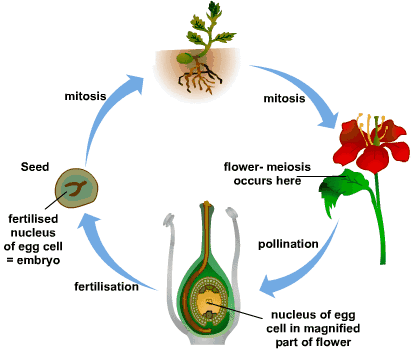
Identify and explain different stages of sexual reproduction in plants?
1. Pollination: Pollination is the process by which pollen grains from the male parts of a flower are transferred to the female parts of another flower. This is usually done by insects, wind, or other animals. Pollination is necessary for sexual reproduction in plants as it is needed to facilitate the fertilization of the ovules in the female parts of the flower.
2. Fertilization: Fertilization is the process by which the sperm cell from the male parts of the flower fuses with the egg cell in the female parts of the flower. This process is essential for sexual reproduction as it produces a single-celled zygote, which will eventually develop into an embryo.
3. Embryogenesis: Embryogenesis is the process by which the zygote develops into an embryo. During this process, the embryo will develop its organs and structures.
4. Germination: Germination is the process by which the embryo develops into a seedling. During this process, the seedling will develop its roots and leaves.
5. Growth: Growth is the process by which the seedling develops into a mature plant. During this process, the plant will develop its flowers, fruits, and other structures.

sexual reproduction,plants,pollination
